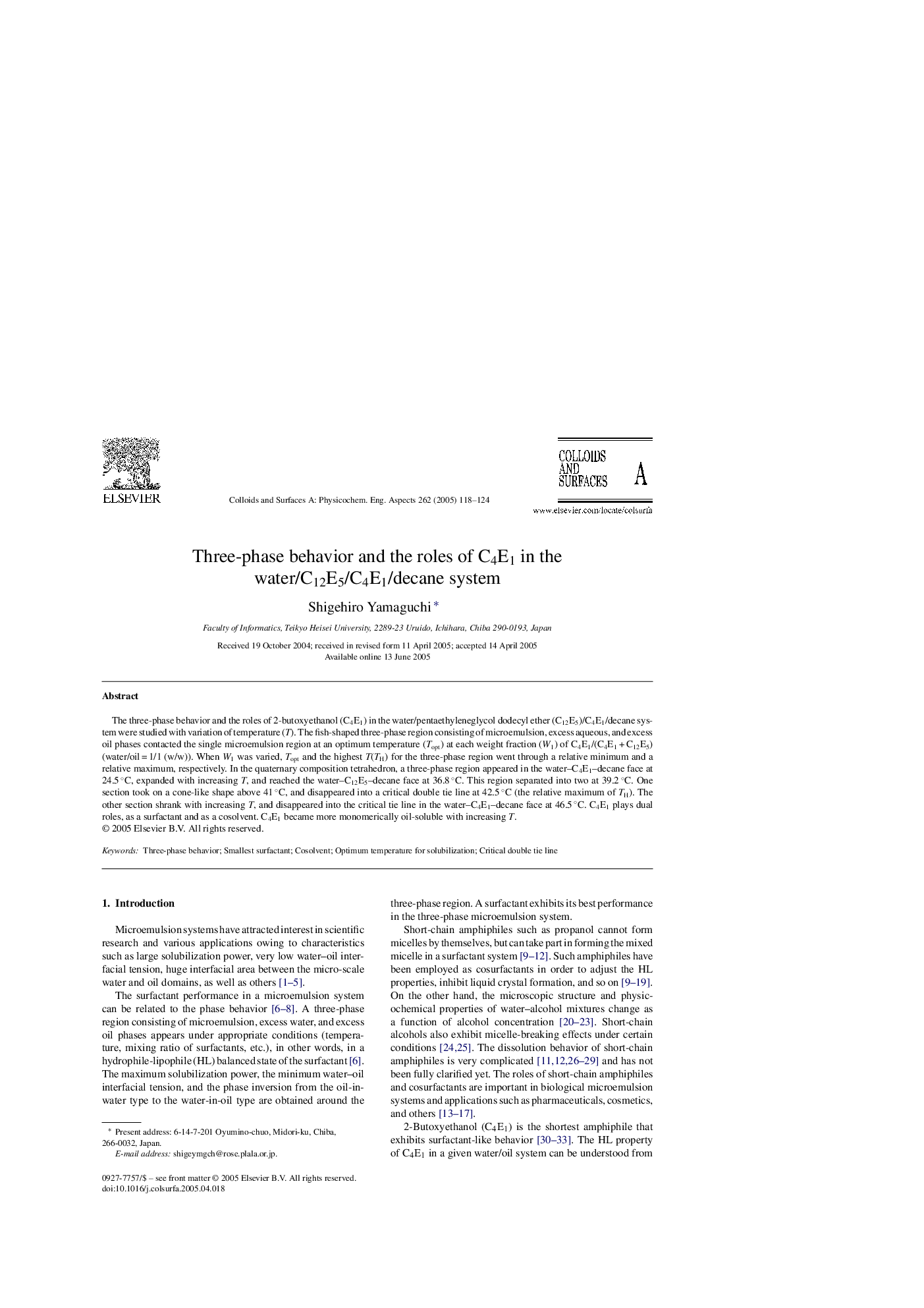| Article ID | Journal | Published Year | Pages | File Type |
|---|---|---|---|---|
| 9675811 | Colloids and Surfaces A: Physicochemical and Engineering Aspects | 2005 | 7 Pages |
Abstract
The three-phase behavior and the roles of 2-butoxyethanol (C4E1) in the water/pentaethyleneglycol dodecyl ether (C12E5)/C4E1/decane system were studied with variation of temperature (T). The fish-shaped three-phase region consisting of microemulsion, excess aqueous, and excess oil phases contacted the single microemulsion region at an optimum temperature (Topt) at each weight fraction (W1) of C4E1/(C4E1 + C12E5) (water/oil = 1/1 (w/w)). When W1 was varied, Topt and the highest T(TH) for the three-phase region went through a relative minimum and a relative maximum, respectively. In the quaternary composition tetrahedron, a three-phase region appeared in the water-C4E1-decane face at 24.5 °C, expanded with increasing T, and reached the water-C12E5-decane face at 36.8 °C. This region separated into two at 39.2 °C. One section took on a cone-like shape above 41 °C, and disappeared into a critical double tie line at 42.5 °C (the relative maximum of TH). The other section shrank with increasing T, and disappeared into the critical tie line in the water-C4E1-decane face at 46.5 °C. C4E1 plays dual roles, as a surfactant and as a cosolvent. C4E1 became more monomerically oil-soluble with increasing T.
Keywords
Related Topics
Physical Sciences and Engineering
Chemical Engineering
Colloid and Surface Chemistry
Authors
Shigehiro Yamaguchi,
